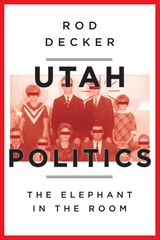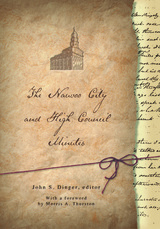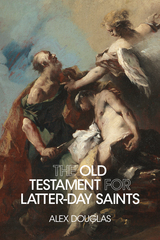4 have author last names that start with D have author last names that start with D

Some themes reoccur: governors become popular by fighting federal oversight— signaling a lingering distrust that Washington could alter the Mormon way of life—and liberals use the court system to circumvent conservative legislatures who see public morality as a defining feature of government. Through this lens, issues both deceptively innocuous and deeply complex underscore Utah’s dance with religious freedom and civil liberty.

Yes resounded from every quarter of the room,” the clerk, Willard Richards, wrote. “Are we offering … to take away the right[s] of anyone [by] this [action] [to]day?” one of the city councilmen, William Phelps, shouted. “No!!!” was the answer “from every quarter.” Should they also tear down the barn of newspaper editor Robert Foster? Yes! they said. By the time the meeting was over, the Nauvoo police, assisted by 100 soldiers of the Nauvoo Legion, had “tumbled the press and materials into the street and set fire to them, and demolished the machinery with a sledge-hammer.
Another gripping event occurred on September 8, 1844, when the high council gathered outdoors to accommodate large crowds for the trial of Sidney Rigdon of the First Presidency. A behind-the-scenes power struggle became evident as Brigham Young stepped forward to take control of the meeting, culminating in a request for a vote from the audience. Young asked everyone to “place themselves so that [he] could see them, so he would “know who goes for Sidney.” There followed a flurry of denunciations of various Church members who were summarily excommunicated by acclimation rather than by trial in a meeting lasting six hours.

Professor Dobbelaere points to several reasons for its growth. Soka Gakkai emphasizes inner peace rather than rules of behavior or hierarchical allegiance. Sociologists describe it as “trans-modern,” meaning that it blends ancient and contemporary sensitivities such as Buddhist mysticism, science, art and music, a concern for the environment, and social activism.
Initially there was a reliance on aggressive proselyting, later replaced with a more moderate encouragement to share with friends. The movement now engages other faiths in cultural and intellectual exchanges and in pursuit of common ethical objectives. This adaptability and sincere concern for its membership and for society as a whole bode well for its future success.

This book also explores the intriguing ways in which Latter-day Saints have interpreted and engaged with this ancient text and the author navigates their diverse interpretations of it. He examines how individuals have alternately embraced the Old Testament as myth or history, law or legend, wise counsel or sacred scripture. He shows where many traditional interpretations have come from, and offers many ways to encourage a more nuanced understanding of the text.
Drawing from a wealth of scholarly research and his own unique perspective, Douglas presents a compelling and multidimensional analysis of the Old Testament. However readers approach the text, this book sheds light on the complex nature of the Old Testament and its enduring relevance to the Latter-day Saint tradition.
READERS
Browse our collection.
PUBLISHERS
See BiblioVault's publisher services.
STUDENT SERVICES
Files for college accessibility offices.
UChicago Accessibility Resources
home | accessibility | search | about | contact us
BiblioVault ® 2001 - 2024
The University of Chicago Press









